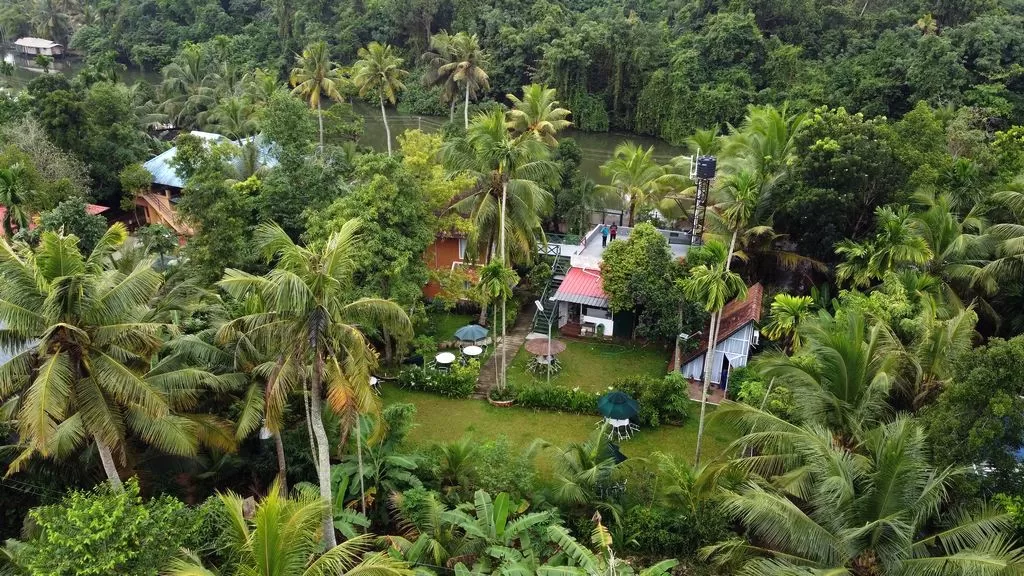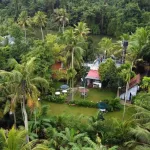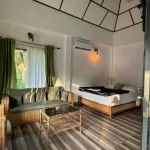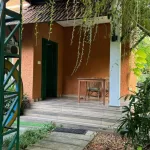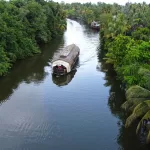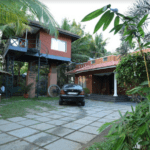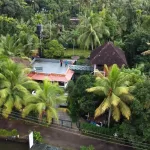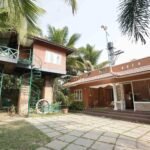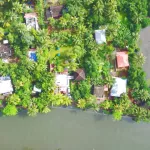Nestled along the tranquil backwaters of Kumarakom, Garggi Kumarakom Homestay is your front-row seat to one of India’s most enchanting birdwatching destinations. Surrounded by the lush greenery of Vembanad Lake’s shores and just a stone’s throw from the famed Kumarakom Bird Sanctuary, this homestay offers nature lovers and bird enthusiasts an immersive escape into a world of fluttering wings, vibrant plumage, and melodic calls. Here, the air hums with life, and every glance reveals a new feathered marvel. Whether you’re a seasoned birder or a curious beginner, Garggi is the perfect base to explore Kumarakom’s avian wonders.
Bird Species: A Symphony of Feathers
Kumarakom’s unique ecosystem—spanning wetlands, mangroves, paddy fields, and canals—makes it a magnet for over 180 bird species, both resident and migratory. From Garggi, you’re poised to encounter a dazzling array of avian life, especially with the bird sanctuary nearby.
- Resident Stars: The locals are a year-round delight. Picture the Malabar Trogon, a secretive forest dweller with a fiery red belly and emerald back, flitting through the trees. The White-throated Kingfisher, with its electric-blue wings and chestnut head, perches boldly near the water, scanning for fish. Little Cormorants and Indian Darters (snakebirds) dry their glossy black wings on branches overhanging the canals, their slender necks weaving through the air like living calligraphy. Purple Herons stalk the shallows, their slate-gray elegance mirrored in the still water, while Brahminy Kites soar overhead, their white heads and chestnut wings a striking contrast against the sky.
- Migratory Marvels: From November to February, Kumarakom transforms into a winter refuge for birds fleeing colder climes. The Siberian Crane, a rare and majestic visitor, graces the wetlands with its snow-white plumage and graceful dance. Pintail Ducks and Garganey Teals ripple the water in flocks, their subtle browns and greens shimmering in the sunlight. The Paradise Flycatcher, with its long, ribbon-like tail trailing behind, darts through the foliage—an ethereal flash of white or rufous. And don’t miss the Whiskered Tern, hovering above the lake before plunging for prey, its black cap a seasonal crown.
Birdwatching Tips: Making the Most of Your Adventure
To fully immerse yourself in Kumarakom’s avian spectacle from Garggi, a few tips can elevate your experience:
- Timing is Key: Dawn (5:30–7:30 AM) and dusk (4:30–6:00 PM) are prime birdwatching hours—birds are most active, and the soft light enhances visibility. Migratory season (November–February) is ideal for rare sightings, while June–August showcases breeding residents in full splendor.
- Gear Up: Bring binoculars (8×42 or 10×50 recommended) for close-up views and a camera with a zoom lens (200mm+) to capture fleeting moments. A field guide, like Birds of Southern India by Grimmett and Inskipp, helps identify species on the spot.
- Stay Silent and Still: Birds are skittish—move slowly, avoid sudden gestures, and keep noise low. Wear muted colors (greens, browns) to blend into the surroundings.
- Explore by Boat: Book a canoe or shikara ride from Garggi’s hosts to glide through narrow canals. The water-level perspective brings you closer to aquatic species like herons and kingfishers, undisturbed by foot traffic.
- Use the Sanctuary: The Kumarakom Bird Sanctuary, just minutes away, offers trails and watchtowers. Start at the entrance trail for forest birds, then climb the second tower (a 2-km walk) for panoramic views of wetland flocks.
- Listen First: Tune into the soundscape—cuckoos’ haunting calls, kingfishers’ sharp trills, or the rustle of wings can guide you to hidden gems before you see them.
Proximity to Kumarakom Bird Sanctuary: A Birder’s Dream
Garggi Kumarakom Homestay sits enviably close to the Kumarakom Bird Sanctuary, a 14-acre haven on Vembanad Lake’s banks, roughly 2–3 kilometers away (a 5–10-minute drive or a scenic 30-minute walk). This proximity means you can roll out of bed and be among the birds before the day heats up. The sanctuary, once a rubber plantation under British colonist Alfred George Baker, is now a protected paradise managed by the Kerala Tourism Development Corporation. Its trails wind through mangroves and forests, while canals and the lake host waterfowl and waders. From Garggi, you can arrange a quick trip to the sanctuary’s entrance, where a modest fee (around INR 50–100) grants access to its riches. The homestay’s hosts often coordinate boat rides directly from their waterfront, linking you seamlessly to this avian hotspot.
Stunning Bird Photography: A Visual Feast
While I can’t provide photos, let these descriptions transport you:
- Kingfisher Moment: A Pied Kingfisher hovers mid-air, its black-and-white pattern stark against the canal’s green fringe. It dives, a blur of motion, emerging with a silver fish glinting in its beak as water droplets scatter like diamonds.
- Heron Serenity: A Grey Heron stands statue-still in the shallows near Garggi, its slate-blue feathers blending with the dawn mist. The rising sun gilds its reflection, creating a perfect mirror image on the lake.
- Migratory Magic: A cluster of Siberian Cranes wades in the sanctuary’s wetlands, their white forms glowing against the muddy browns. One stretches its wings—eight feet wide—revealing black-tipped feathers in a fleeting ballet of grace.
- Forest Flash: Deep in the sanctuary’s trail, a Malabar Parakeet erupts from the canopy, its green body and red beak a vivid streak against the dark leaves, leaving a trail of squawks in its wake.
From Garggi Kumarakom Homestay, Kumarakom’s avian wonders unfold like a living gallery—each bird a brushstroke on nature’s canvas. With the sanctuary’s proximity, expert tips in hand, and a kaleidoscope of species to discover, this is more than a stay; it’s a pilgrimage to a birdwatcher’s paradise. Pack your binoculars, step into the quiet, and let the wings of Kumarakom carry you away.

